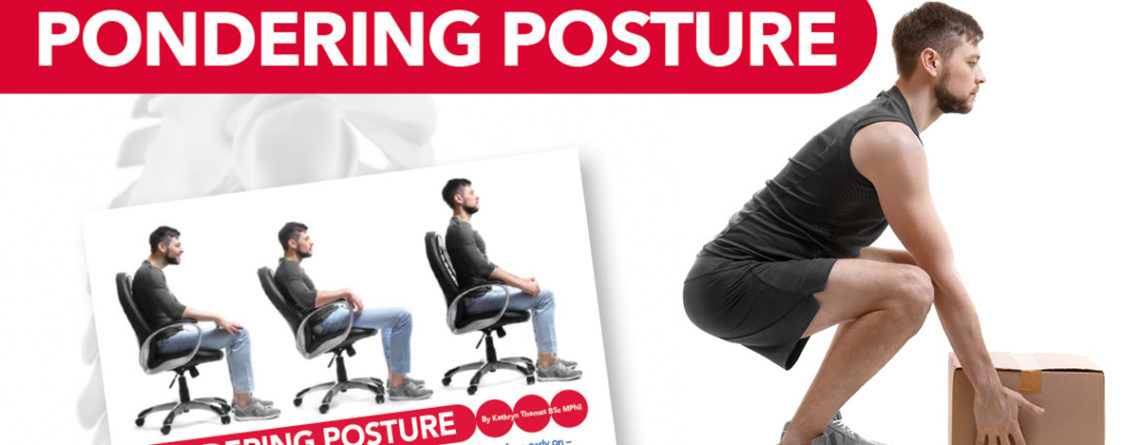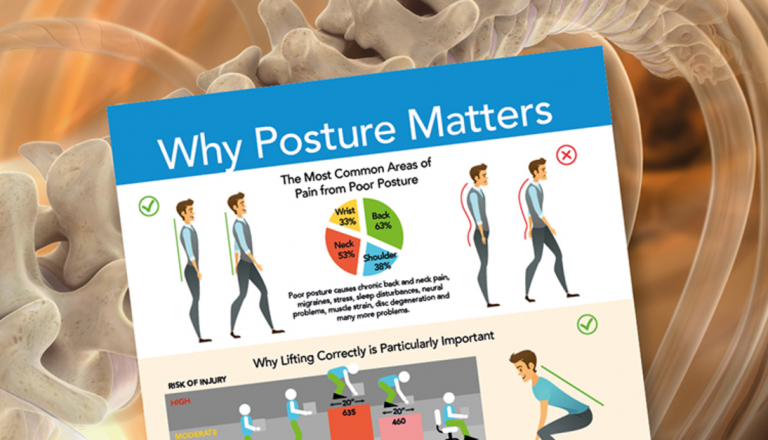WHY POSTURE MATTERS
Did you know that poor posture doesn’t just affect your muscles and joints? Poor posture can also affect your digestion, breathing and mental health, as well as risk of injury.
We’ve probably all been told to “stand up straight, shoulders back, don’t slouch” at some point in our lives. What we may not realise, is how damaging a bad posture can be not only to our physical health but in many other aspects of our mental health and well being, and even more so as we age.
There are actually two types of posture:
- Dynamic posture is how you hold yourself when you’re moving your body, for example during walking or running, lifting etc
- Static posture is how you hold yourself when you’re not moving, for example when you’re standing, sitting, or sleeping.
YOUR BODY AS A TENT
- Consider your body posture as a tent. The rigid poles hold the canvas up, and form the main structure (your spine)
- The poles can’t stand upright without the help of guy-ropes(muscles) and pegs (ligaments and tendons) holding everything in place.
- The tension in the guy-ropes needs to be balanced otherwise if one side is too tight (or loose) the opposite side sags or collapses.
- Similarly, the strength and placement of the pegs holding the ropes is crucial, so they don’t slip loose or snap and the side of the tent crumbles.
If you can imagine that, you’ll know where I’m heading with this.
PERFECT BALANCE
- Essentially your spine is the main central pole of the tent and your muscles are the guy-ropes.
- The muscles attaching to your spine and working around your spine need to be balanced in strength and length; otherwise they will load your spine unevenly or pull on spinal joints allowing it to ‘cave in’ on a side that is lacking support, or overload and damage structure on other side.
- In the same way your tendons and ligaments are the pegs holding the muscles in place, ensuring they are strong and healthy, allows the muscles to work properly and in turn support and move your spine correctly.
THE GOAL
The goal of having good posture is to minimise strain on your spine and its supporting muscles, tendons, and ligaments, thereby allowing you to sit or stand with minimal effort and avoiding the development of pain and stiffness.
Thanks to gravity, your feet are well-grounded, but keeping your body upright and in an optimal position, is the job of your postural muscles. If those muscles are working healthily and in balance, they prevent your bones and ligaments from being stressed, strained, and pulled out of alignment, as well as keep your head upright and aligned.
MODERN LIFESTYLES
Unfortunately, modern lifestyles are becoming increasingly sedentary, whether that’s through the use of transport, sitting at desks or computers, binging for hours on Netflix, or gaming and social media, your postural muscles are being used less and less.
Being relatively inactive throughout the day and not participating in regular physical activity can lead to weakness, meaning your postural muscles tire more easily. This in turn makes it harder to maintain a good posture when you are standing or sitting, so you slump, slouch more or lean on walls, tables or bus stops when standing.
The relationship you have with your postural muscles may have flickered out over time, leaving your body at risk for spinal wear and tear and chronic pain. Plenty of things can lead to bad posture, from old habits to health conditions affecting your spine. A lot of people just started slouching ages ago and never corrected it. It simply becomes a habit and over time your body accepts this to be the norm. However, other factors can also add to poor posture, like having your work desk set up in a way that leads to slouching throughout the day or regularly being hunched over your phone, texting, reading, or playing games.
The postures you assume provide clues to not only the condition of your body but also how you feel about yourself, your confidence (or lack of it), how much energy you have (or are lacking), how enthusiastic (or unenthusiastic) you feel, or whether you feel confident and relaxed (or anxious and tense). Intriguingly, you almost always adopt the same postures in response to the same emotions.
If you have ever taken a moment (and you should) to stop and look up from your computer or phone while waiting at the bus stop or sitting on the park bench, you will notice that everyone’s body and posture is different. In the same way therefore, everyone’s need for advice and exercises to correct their posture will differ.
Musculoskeletal practitioners like Osteopaths, can all help by giving you specific exercises to help you strengthen weak muscles and stretch tight ones, thereby improving your posture. Getting that perfect spine isn’t always achievable or a quick fix, but small changes to daily routine, becoming more body conscious and performing exercises a couple of days a week will go a long way to helping improve your posture, reduce the risk of injury and prevent pain.
HOWEVER...
Before you jump to conclusion that EVERYTHING that hurts in your body is because of your posture , please consider this …
- Discussions about spinal health and pain should also include other evidence-based factors (such as the benefits about physical activity, stress, and sleep, chronic health conditions etc) and not focus solely on how you sit or stand.
- There is definitely merit in addressing postural issues; however, the time, focus and degree of importance you place on correcting it should depend your individual circumstances : sporting and work demands as well as your psychosocial health.
- One posture doesn’t fit all.
- See your health practitioner and get a good advice – rather than focusing on over-protection and fear of hurting your spine.



